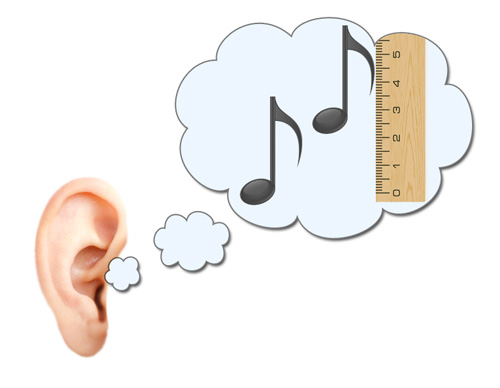When musicians ask themselves “why learn intervals?” often the answer is “to recognise notes by ear”.
Intervals can be seen as the “building blocks” with which melodies and harmonies are created, and so interval ear training helps you to pick apart these elements of music by ear and recognise the notes present.
Learning to recognise intervals improves your overall sense of relative pitch, and it is this musical sense which allows you to recognise notes, scales, chords, chord progressions and more.
However, where many music students get stuck is that even when you learn to recognise intervals, it is not immediately obvious how to use that new skill to recognise notes in music you hear.
There are three ways you can apply the knowledge of intervals to recognise notes by ear:
1. Recognise intervals between pairs of notes
With this approach, you use your interval recognition skills to “measure” the distances between note pitches by ear, and so work out the relationship between those notes. This then lets you identify each note based on the one before it.
For example, if you’re listening to the root note of a chord progression, you could apply your interval recognition skills to hear that the root of the second chord moves up a perfect fourth from the first one, so it must be the IV chord. Then the third chord in the sequence is a tone above that one, so it must be the V chord.
Or, you might hear that the intervals between the first three notes of a melody are tone, tone, semitone – so it’s just like the beginning of a major scale.

This approach works very well for isolated notes or simple musical arrangements, and is an easy way to start putting your interval recognition skills to practical use.
This is also the approach used in our Step and a Half melody ear training app.
2. Recognise the note’s relationship to the root/key note
This approach is similar, but instead of comparing each note with the nearest other note, you are always comparing it with the root note of the song’s key. This is directly related to learning to recognise note degrees in scale ear training.
With this approach you try to recognise the interval between a note and the key. So using the same examples as above, you would recognise the third chord in the progression not by comparing it to the second chord (IV) but by hearing the perfect fifth between it and the root of the first chord (I). With the melody example you would be recognising the tone between first and second note, and then the major third between the first and third notes.
This approach works better than the first approach when the music is fast or complicated. It requires a bit more musical imagination, as you must always keep that root note in mind as your “anchor”. But once you get the hang of this it allows you to recognise notes in more challenging situations, and connects your ear more closely to the musical meaning of each note in the context of the key.
3. Passive/Automatic Recognition
Using this method is what frustrates interval ear training students – but it is also the method you should aspire to!
With this approach you don’t actively think about recognising intervals, you just try to recognise the notes. For a beginner, this simply doesn’t work, and it seems like using intervals to recognise notes is never going to be possible. Instead, beginners should use one of the other two methods above which more explicitly put intervals to work.
Once you’ve started to reliably recognise notes using intervals however, you will find yourself naturally transitioning to this “passive” approach. As your sense of relative pitch becomes stronger and more finely honed, you will find you immediately instinctively identify notes without having to actively think through which intervals are present.
Before any of these, you should practice recognising intervals in isolation. Once you are quite capable with recognising isolated intervals, we would recommend starting to use Approach 1, to get your musical brain used to hearing intervals between notes in real music.
Then, work on scale ear training and using intervals to recognise scale degrees, Approach 2.
With practice, you should find yourself naturally transitioning to Approach 3 over time.
Similar questions answered on this page:
- Why learn intervals?
- What’s the point of interval ear training?
- How can you apply the knowledge of interval to recognize notes by ear?






